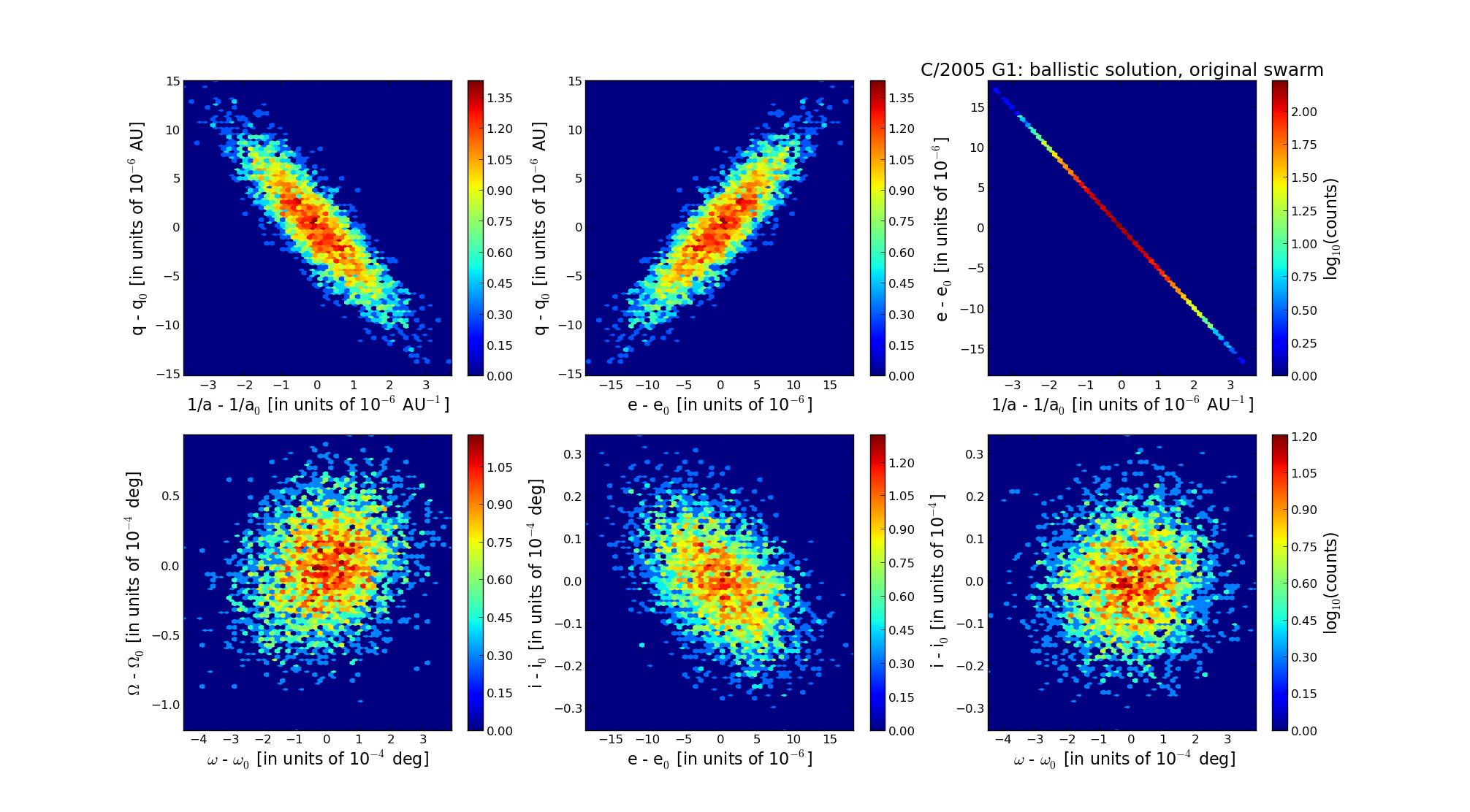| Solar System Dynamics & Planetology Group |
 |
C/2005 G1 LINEAR |  |
| Solar System Dynamics & Planetology Group |
 |
C/2005 G1 LINEAR |  |
| number of observations | 292 |
| number of residuals | 573 |
| data interval | 2005 Mar. 22 — 2007 Mar. 11 |
| rms [arcsec] | 0.49 |
| orbit quality class | 1a |
| Epoch (TT) | 20060306.0 | = JD 2453800.5 |
| time of perihelion passage (TT) | 20060227.383771 | ± 0.000994 |
| perihelion distance | 4.96067147 | ± 0.00000433 |
| eccentricity | 0.99979762 | ± 0.00000508 |
| argument of perihelion [deg] | 113.825055 | ± 0.000120 |
| longitude of the ascending node [deg] | 299.586688 | ± 0.000029 |
| inclination [deg] | 108.414423 | ± 0.000010 |
| inverse semimajor axis [10-6 au-1] | 40.80 | ± 1.02 |

| Epoch (TT) | 17001215 | |
| time of perihelion passage (TT) | 20060226.533616 | ± 0.000969 |
| perihelion distance | 4.95322048 | ± 0.00000434 |
| eccentricity | 0.99991785 | ± 0.00000505 |
| argument of perihelion [deg] | 113.858813 | ± 0.000118 |
| longitude of the ascending node [deg] | 299.571155 | ± 0.000029 |
| inclination [deg] | 108.385968 | ± 0.000009 |
| inverse semimajor axis [10-6 au-1] | 16.58 | ± 1.02 |
| Epoch (TT) | 23111103 | |
| time of perihelion passage (TT) | 20060227.214273 | ± 0.000986 |
| perihelion distance | 4.95699500 | ± 0.00000428 |
| eccentricity | 0.99976267 | ± 0.00000506 |
| argument of perihelion [deg] | 113.727471 | ± 0.000118 |
| longitude of the ascending node [deg] | 299.558608 | ± 0.000029 |
| inclination [deg] | 108.370283 | ± 0.000010 |
| inverse semimajor axis [10-6 au-1] | 47.88 | ± 1.02 |